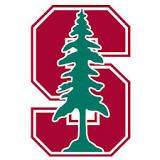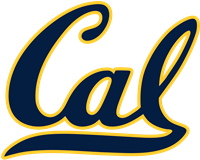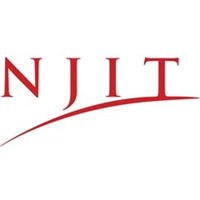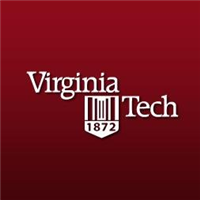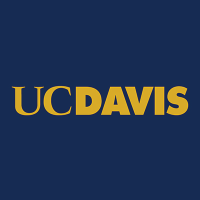What do they do?
Perform engineering duties in planning, designing, and overseeing construction and maintenance of building structures and facilities, such as roads, railroads, airports, bridges, harbors, channels, dams, irrigation projects, pipelines, power plants, and water and sewage systems.
Also known as:
City Engineer, Civil Engineer, County Engineer, Design Engineer, Engineer, Geotechnical Engineer, Licensed Engineer, Project Engineer, Railroad Design Consultant, Research Hydraulic Engineer, Structural Engineer
-
7.1%
Change
Ranks #47 in job growth rate560Job Openings
Ranks #21 in net job growth
-
Stanford University
Stanford, CA
-
University of California-Berkeley
Berkeley, CA
-
New Jersey Institute of Technology
Newark, NJ
-
Virginia Polytechnic Institute and State University
Blacksburg, VA
-
University of California-Davis
Davis, CA
Looking for colleges that offer a specific major? Use the College Match Tool to find your best-matched schools and discover your estimated Net Price!
- Doctorate or Professional Degree (4%)
- Master's degree (26%)
- Bachelor's degree (59%)
- Associate's degree (4%)
- Some college, no degree (4%)
- High school diploma equivalent (2%)
- Less than high school diploma (1%)
Most Popular Majors that prepare Civil Engineers
-
#1
-
Degrees Granted
4,120
-
Female Students
1,406
-
Male Students
2,714
-
Median Starting Salary
$57,200
-
-
#2
-
Degrees Granted
246
-
Female Students
67
-
Male Students
179
-
Median Starting Salary
$59,800
-
-
#3
-
Degrees Granted
131
-
Female Students
39
-
Male Students
92
-
Median Starting Salary
$58,700
-
-
#4
-
Degrees Granted
86
-
Female Students
35
-
Male Students
51
-
Median Starting Salary
$57,200
-
-
#5
-
Degrees Granted
79
-
Female Students
32
-
Male Students
47
-
Median Starting Salary
$57,200
-
People in this career often have these skills:
- Active Listening - Giving full attention to what other people are saying, taking time to understand the points being made, asking questions as appropriate, and not interrupting at inappropriate times.
- Reading Comprehension - Understanding written sentences and paragraphs in work-related documents.
- Speaking - Talking to others to convey information effectively.
- Mathematics - Using mathematics to solve problems.
- Critical Thinking - Using logic and reasoning to identify the strengths and weaknesses of alternative solutions, conclusions, or approaches to problems.
- Complex Problem Solving - Identifying complex problems and reviewing related information to develop and evaluate options and implement solutions.
- Science - Using scientific rules and methods to solve problems.
- Systems Analysis - Determining how a system should work and how changes in conditions, operations, and the environment will affect outcomes.
- Time Management - Managing one's own time and the time of others.
- Operations Analysis - Analyzing needs and product requirements to create a design.
- Judgment and Decision Making - Considering the relative costs and benefits of potential actions to choose the most appropriate one.
People in this career often know a lot about:
- Design - Knowledge of design techniques, tools, and principles involved in production of precision technical plans, blueprints, drawings, and models.
- Engineering and Technology - Knowledge of the practical application of engineering science and technology. This includes applying principles, techniques, procedures, and equipment to the design and production of various goods and services.
- Building and Construction - Knowledge of materials, methods, and the tools involved in the construction or repair of houses, buildings, or other structures such as highways and roads.
- Mathematics - Knowledge of arithmetic, algebra, geometry, calculus, statistics, and their applications.
- English Language - Knowledge of the structure and content of the English language including the meaning and spelling of words, rules of composition, and grammar.
- Physics - Knowledge and prediction of physical principles, laws, their interrelationships, and applications to understanding fluid, material, and atmospheric dynamics, and mechanical, electrical, atomic and sub-atomic structures and processes.
- Administration and Management - Knowledge of business and management principles involved in strategic planning, resource allocation, human resources modeling, leadership technique, production methods, and coordination of people and resources.
- Customer and Personal Service - Knowledge of principles and processes for providing customer and personal services. This includes customer needs assessment, meeting quality standards for services, and evaluation of customer satisfaction.
People in this career often have talent in:
- Oral Comprehension - The ability to listen to and understand information and ideas presented through spoken words and sentences.
- Written Comprehension - The ability to read and understand information and ideas presented in writing.
- Oral Expression - The ability to communicate information and ideas in speaking so others will understand.
- Written Expression - The ability to communicate information and ideas in writing so others will understand.
- Problem Sensitivity - The ability to tell when something is wrong or is likely to go wrong. It does not involve solving the problem, only recognizing that there is a problem.
- Deductive Reasoning - The ability to apply general rules to specific problems to produce answers that make sense.
- Inductive Reasoning - The ability to combine pieces of information to form general rules or conclusions (includes finding a relationship among seemingly unrelated events).
- Information Ordering - The ability to arrange things or actions in a certain order or pattern according to a specific rule or set of rules (e.g., patterns of numbers, letters, words, pictures, mathematical operations).
- Mathematical Reasoning - The ability to choose the right mathematical methods or formulas to solve a problem.
- Fluency of Ideas - The ability to come up with a number of ideas about a topic (the number of ideas is important, not their quality, correctness, or creativity).
- Category Flexibility - The ability to generate or use different sets of rules for combining or grouping things in different ways.
- Number Facility - The ability to add, subtract, multiply, or divide quickly and correctly.
- Visualization - The ability to imagine how something will look after it is moved around or when its parts are moved or rearranged.
- Near Vision - The ability to see details at close range (within a few feet of the observer).
- Flexibility of Closure - The ability to identify or detect a known pattern (a figure, object, word, or sound) that is hidden in other distracting material.
- Perceptual Speed - The ability to quickly and accurately compare similarities and differences among sets of letters, numbers, objects, pictures, or patterns. The things to be compared may be presented at the same time or one after the other. This ability also includes comparing a presented object with a remembered object.
- Far Vision - The ability to see details at a distance.
- Speech Recognition - The ability to identify and understand the speech of another person.
- Speech Clarity - The ability to speak clearly so others can understand you.
People in this career often do these activities:
- Coordinate safety or regulatory compliance activities.
- Test characteristics of materials or structures.
- Direct construction activities.
- Inspect facilities or sites to determine if they meet specifications or standards.
- Estimate technical or resource requirements for development or production projects.
- Create graphical representations of civil structures.
- Recommend technical design or process changes to improve efficiency, quality, or performance.
- Evaluate technical data to determine effect on designs or plans.
- Survey land or bodies of water to measure or determine features.
- Investigate the environmental impact of projects.
- Develop technical methods or processes.
- Estimate operational costs.
- Prepare proposal documents.
- Explain project details to the general public.
- Incorporate green features into the design of structures or facilities.
- Analyze operational data to evaluate operations, processes or products.
- Implement design or process improvements.
- Design systems to reduce harmful emissions.
This page includes data from:

 Occupation statistics: USDOL U.S. Bureau of Labor Statistics Occupational Employment Statistics
Occupation statistics: USDOL U.S. Bureau of Labor Statistics Occupational Employment Statistics


